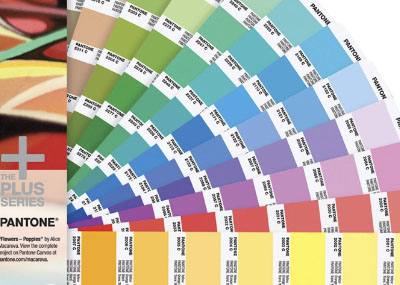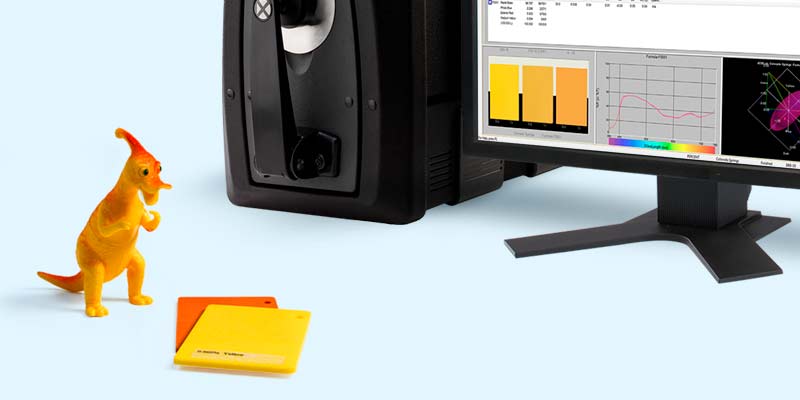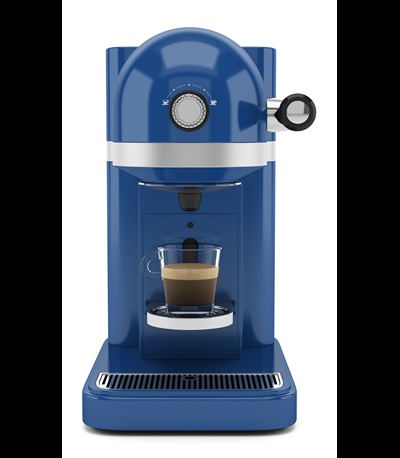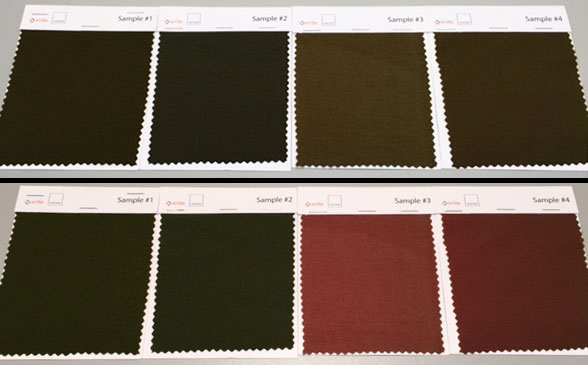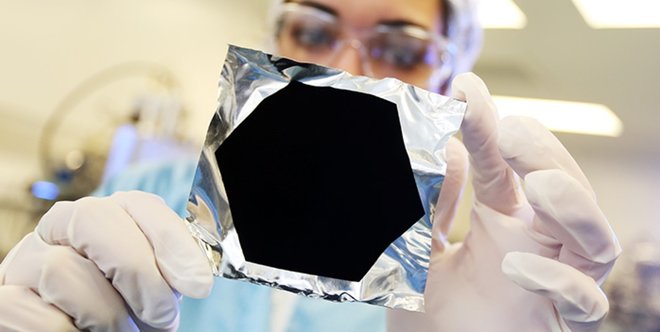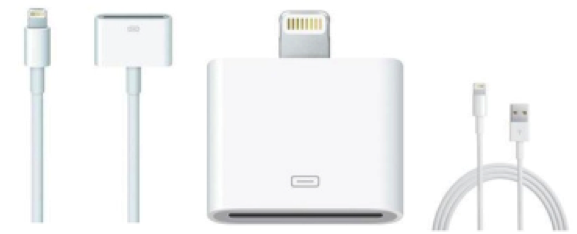Jeder, der für Druckerzeugnisse und Verpackungen verantwortlich ist, weiß, dass sich einige Farben, wie Orange, nur mit CMY-Druckfarben nicht reproduzieren lassen. Oft kommt beim subtraktiven Farbdruck eine vierte Farbe, nämlich Schwarz (K), hinzu. Da C+M+Y aufgrund von Unreinheiten in den Druckfarben C (Cyan), M (Magenta) und Y (Gelb) ein schmutziges Braun erzeugen, entsteht durch die Zugabe von echter schwarzer Druckfarbe die Farbtiefe, die CMY allein nicht erreichen kann. Zud...
In einer qualitativ hochwertigen Lichtkabine lässt sich am besten visualisieren, wie Farbe unter echten Lichtbedingungen aussieht und wirkt. Herkömmliche Lichtkabinen bieten gängige Lichtarten wie Tages-, Glühlampen- und Leuchtstofflampenlicht zur Simulation, wie Farbe im Geschäft und nach dem Kauf draußen und bei Wohnraumlicht aussehen wird. Inzwischen wirkt sich der vermehrte Einsatz von LED-Lampen in privaten, geschäftlichen und Einzelhandelsumgebungen auf ...
Black Friday. Not only is it the much anticipated start to holiday shopping, it’s also a day manufacturers have been preparing for all year long. Whether mass-producing holiday cards, candy canes, plastic toys, or festive clothing, accurate color is a must. Manufacturers can’t ship two of the same toy if they won’t match on the showroom floor, and holiday sweaters that are a shade off will end up at a discount store instead of a fashion boutique. Perfection is especially import...
Für ein erfolgreiches Qualitätskontrollprogramm benötigen Sie gute Geräte, zuverlässige Software und geschulte Anwender. Trotzdem gibt es noch typische Fallstricke, auf die man bei der Verwendung eines Spektralfotometers zur Analyse der Farbqualität achten sollte. Measuring plastic parts with the X-Rite Ci7800 benchtop spectrophotometer. Fünf große Fallstricke bei der Farbmessung 1. Unbrauchbare Standards und Proben Physische Standards und Proben h...
Whether you work with plastics, coatings or textiles, you must consistently achieve in-tolerance color or your product could be rejected before it even makes it to the shelf or showroom. This is especially true for brands that rely on off-site suppliers and manufacturers for raw materials and parts that come together at assembly, such as the plastic dashboard, fabric seats, and coated interior panels of a car. Even if each site produces in-tolerance color, it must be monitored an...
Appearance is more than just color. It’s an all-inclusive look at everything inherent to an object, including texture, gloss, transparency, translucency, and special effects like sparkle and shimmer. When viewed from different angles or under different lighting conditions, appearance effects can change our perception of color. That's why it’s important to control both color and appearance throughout design and development. Durable goods brands use appearance effects to captur...
Using a light booth to visually judge color is a great start to a successful color evaluation program. It allows you predict how color will look under multiple light sources so there won’t be any color surprises when the light changes over the life of the product. Introducing a color measurement device to capture spectral data is the next logical step. For a really great color program, you need to use both a light booth AND a spectrophotometer. This dynamic duo offers benefits you can&rsqu...
The World Series starts next week. While players and fans are gearing up for the big event, stadium groundskeepers are preparing, too. You’ve surely seen those meticulous patterns in the grass – crisscross, spiral, plaid – but do you know how the groundskeepers create them? Thanks to a phenomenon called geometric metamerism (aka gonio-appearance), the grass really is greener on the other side. Read on to learn more about this optical illusion that can trick your eyes and wreak havoc on y...
Color is our perception of reflected light across the visible spectrum. When light hits an object, it absorbs some rays and reflect others. The color of light that reflects back into our eyes is the color we perceive. The more light an object absorbs, the darker it appears. With black, very little light is reflected. Pure black in the presence of light wasn’t achieved until 2014 when Surrey NanoSystems announced the invention of Vantablack. This high-tech artificial substance absorbs 99....
It’s the most wonderful time of the year! A time to reminisce… to celebrate our successes, and to explore areas that may need a little more attention in 2017. If color accuracy is on your list of things to improve, this article is for you. We’ve compiled a list of the blogs our readers found most helpful and interesting in 2016, so you can start working toward your goal of more accurate color in the New Year. Did your favorite blog make the list? Top 10 X-Rite Blogs of 2016 ...
Seit etwa den 1930er Jahren schreibt die Mode vor, dass man vor dem Memorial Day (US-amerikanischer Feiertag am letzten Montag im Mai) keine weiße Kleidung tragen soll. Es war ein Statussymbol, wenn wohlhabende Menschen ihre Winterkleidung hinter sich ließen und im Sommer mit ihrer leichten, unbeschwerten Kleidung an den Strand fuhren. Auch wenn diese Regel immer noch irgendwie gültig ist, ist die Mode von heute mehr darauf bedacht, wie hell Ihre weiße Kleidung ist, als da...
Did you know that many of the products you use every day contain optical brighteners? Optical brightening agents are chemicals that manufacturers add to products like paper, plastics, and textiles to make them appear whiter and brighter, and to lessen the natural yellowing process that happens over time. They also add these chemicals to cleaning agents to enhance the appearance of materials – primarily textiles – after cleaning. Often unacknowledged by the typical consumer, OBAs trick our eyes i...
If you work in an industry where color accuracy is important, you know that lighting plays a huge role in how you perceive color. A light booth is a crucial part of any visual evaluation program. It can help you verify whether the color of your product is acceptable, plus ensure it will remain accurate in every lighting condition after purchase. When parts are manufactured at different factories, a light booth should also be used to make sure they continue to match under any lighting condition o...
Viele Unternehmen investieren viel Zeit und Geld in Farbmessgeräte und Software, lassen jedoch außer Acht, welche Rolle die Lichtverhältnisse bei der Lieferfreigabe ihrer Produkte spielen. Bei sachgemäßer Verwendung können Spektralfotometer und Farbmanagement-Software Ihnen sagen, ob die Farben innerhalb des Toleranzbereichs liegen, und Glanz und Metamerie-Effekte (siehe Erklärung zu Metamerie unten) berücksichtigen. Trotzdem ist es noch möglich, da...


